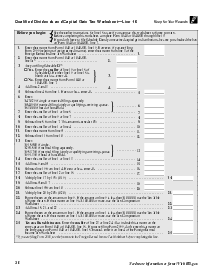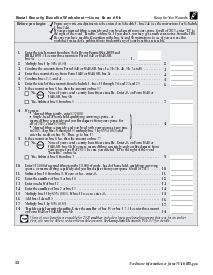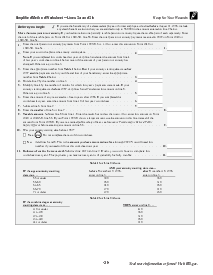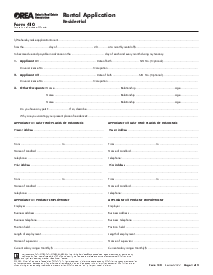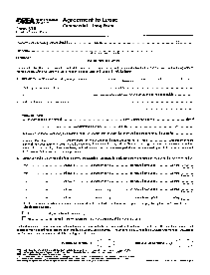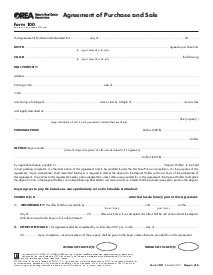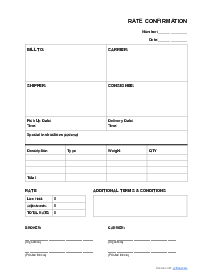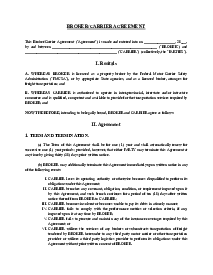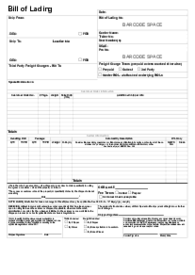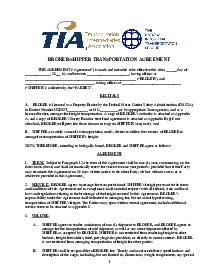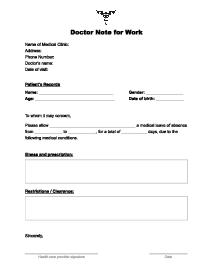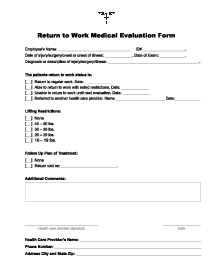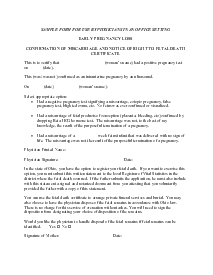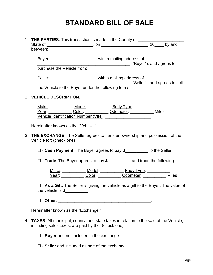-
Templates
1099 FormsAccurately report 1099 information returns and ensure IRS filing with easeExplore all templatesW-9 W-8 FormsEasily manage and share taxpayer details to streamline payments and meet IRS requirements with confidenceExplore all templatesOther Tax FormsFillable tax forms simplify and speed up your tax filing process and aid with recordkeeping.Explore all templatesReal EstateReal estate templates for all cases, from sale to rentals, save you a lot of time and effort.Explore all templatesLogisticsSimplify your trucking and logistics paperwork with our ready-to-use transportation and freight templates.Explore all templatesMedicalMedical forms help you keep patient documentation organized and secure.Explore all templatesBill of SaleBill of Sale templates streamline the transfer of ownership with clarity and protection.Explore all templatesContractsVarious contract templates ensure efficient and clear legal transactions.Explore all templatesEducationEducational forms and templates enhance the learning experience and student management.Explore all templates
-
Features
FeaturesAI-Enhanced Document Solutions for Contractor-Client Success and IRS ComplianceExplore all featuresAI Summarizer Check out the featureAI PDF summarizer makes your document workflow even faster. Ask AI to summarize PDF, assist you with tax forms, complete assignments, and more using just one tool.Sign PDF Check out the featurePDFLiner gives the opportunity to sign documents online, save them, send at once by email or print. Register now, upload your document and e-sign it onlineFill Out PDF Check out the featurePDFLiner provides different tools for filling in PDF forms. All you need is to register, upload the necessary document and start filling it out.Draw on a PDF Check out the featureDraw lines, circles, and other drawings on PDF using tools of PDFLiner online. Streamline your document editing process, speeding up your productivity
- Solutions
- Features
- Blog
- Support
- Pricing
How to Write a Will and Last Testament
.png)
Dmytro Serhiiev
The necessity to prepare this vital doc is recognized by many people these days. But the details behind how it all works are often quite vague. In this post, we’ll make it crystal clear to you by defining a will and providing useful tips on creating last will and testament.

What Is a Last Will and Testament?
A will, sometimes referred to as ‘last will and testament’ is a legal document that clarifies your final preferences related to asset description, estate settlement upon death, and/or legal guardianship specificities if you have minor children. In addition to this, a prepared will guarantees flexibility in terms of paying death taxes. Without a will in place, the government takes control of your assets and decides how they will be distributed.
Under these circumstances, the final outcome will most likely significantly differ from what you initially planned. With that said, writing a will and testament is a must if you want your instructions on what to do with your possessions to be carried out.
How to Create a Last Will and Testament. Writing Guide
Start by making a decision as to the method of writing a will. There are two available options here. The first option is doing it under your own steam. The second option is to turn to professional legal hellp. If you opt for the first method, learn all about your state’s requirements and figure out how you will meet them. Bear in mind that laws alter with time and thus, avoid underestimating the complexity of the process.
Naturally, we recommend that you turn to professional legal assistance when it comes to creating a will. A reliable specialist will review the document you’re working on and generally ensure that you’re doing it all right. Yes, this may turn out to be a bit on the expensive side, but the investment is sure to pay off. Also, when working on your will, equip yourself with an excellent digital file management service. This will automate the process and help you maintain maximum accuracy.
Moving on from tips on how to prepare a last will and testament to the practical must-follow steps:
- Provide identification data when compiling the document. That way, your will will be uniquely yours and won’t come with any misleading information. Specify your name, birthdate, SSN, and contact information.
- Proceed with a declaration. In the first sentence of the file, make an introduction clearly stating that the document is your last will. Indicate that you are mentally healthy and capable of clearly expressing your last wishes. If you overlook this vital point, chances are the document can potentially lose its legitimacy.
- Incorporate a statement that will invalidate all previous wills. That way, you will ensure that any wills you may have created in the past are no longer legally binding.
- Confirm in written form that the document you’ve worked up has been created and signed voluntarily. Because a will signed under duress is considered invalid.
- If you’re distributing your possessions among specific family members, include their names in your will.
- Indicate an executor — the person who will take responsibility for distributing your possessions in accordance with your last wishes. Typically, testators choose lawyers as executors, for the entire matter should be dealt with in a professional, grief-free manner.
- Authorize the executor to act in your interest in terms of your assets, debts, funeral expenses, and other related issues.
How to Fill Out Last Will and Testament
The form consists of five pages, most of which are nonfillable and for information purposes only. Still, we recommend that you fill out this form with the help of a professional attorney. Working with an expert will aid you in avoiding any unexpected calamities or dealing with them like a pro. For example, what will you do if someone mentioned in your will passes away before you? That’s where reliable attorney advice may really come in handy.

Here are the vital must-include points when managing this doc:
- Your name.
- City and county of your residence.
- Personal representative id information.
- Details on the disposition of your property.
- Minor children guardianship details (if applicable).
- All the necessary signatures (including witness signatures).
- The current date.

And that’s majorly it when it comes to what to include in a will and testament. Don’t forget that if you fill out this form online, you can make the most of the super handy e-signature tool. This feature allows you to sign all your files online, and it’s completely legitimate.
Furthermore, with this functionality at your fingertips, you can send files for digital signatures to your recipients (and receive replies) in a matter of minutes. Pure magic straight from the comfort of your home, office, or any other location. That’s what we call the ultimate convenience of working on the go.
By the way, PDFLiner is among the leading online file management solutions that offer its users the possibility to sign their files online. In the catalog, you’ll find a multitude of last will and testament templates that cater to such states as:
- Florida;
- Pennsylvania;
- Tennessee;
- Mississippi;
- Louisiana;
- Missouri.
Overall, our platform offers you a treasure trove of online features that make customizing, sending, and storing your files a piece of cake.
Important note: avoid adding any extra text after your signature. In certain states, any text added below the signature is considered to be invalid. Also, you’re going to need to sign your will in the presence of one or several witnesses. This is to assert that you are of legal age and sound mind.
Will vs. Trust
Now that we’ve already defined wills, let’s touch upon trusts. Just like wills, trusts are ways to state who will receive your possessions. While both these docs have overlapping characteristics, it’s obvious that they differ in some ways, as well. Majorly, these documents differ in terms of how and when they come into force. Wills only go into effect when you die, while trusts are effective immediately upon signing and funding.
Trusts are more complex compared to wills, but they come with some noticeable perks, too. In comparison with wills, trusts are freely utilized when you’re still alive. For instance, you can create a living trust to work up a fund for your kids to access once they reach a stated age.
The document grants you incredible flexibility and versatility. It can be adjusted at any time in case your life situation or choices alter with time. In addition to this, trusts offer more control over your asset distribution, refer to any possessions held inside the trust, and come in an array of shapes and classifications.
Wondering which document is better? There’s no definite answer to this question. Assess your situation, as well as evaluate your needs and goals, before sticking to either of the two options.
State Law for Writing Last Will and Testament
The US consists of fifty separate states. Although it’s a single country functioning under one single flag, the local legal base often varies wildly from one state to another. With that said, if you want your will to be valid, it must comply with the requirements issued by your state of residence. Therefore, exploring those requirements well in advance is a very wise decision. For instance, the rules concerning handwritten or notarized wills (as well as other topics) vary from state to state.
Find some vital points for each state in this respect below:
- In Alabama, for instance, 2 upon-signature witnesses are a must and digital signatures are forbidden.
- In Alaska, they only accept the handwritten version of a will, with two upon-signature witnesses present.
- In Arizona, Arkansas, California, Connecticut, Delaware, Florida, Georgia, Hawaii, Idaho, Illinois, Indiana, Iowa, Kansas, Kentucky, Maine, Maryland, Massachusetts, Michigan, Minnesota, Missouri, Montana, Nebraska, Nevada, New Hampshire, New York, and most other states, the 2-witness-make-it-all-legitimate rule applies, too.
- In Colorado, you have the alternative option to sign your will in front of a notary public instead of two witnesses.
- In Louisiana and Oklahoma, the will should be signed in front of 2 witnesses plus a notary to become legally binding.
- In Mississippi, no witnesses are necessary if you wrote and signed the will as a testator.
With all that said, if you want the document to be valid in your state, the ‘How to make a last will and testament?’ question should be answered with state-specific regulations in mind. For instance, if the laws of your state require that you sign the file in front of two witnesses, but you sign in front of one witness instead, your will is sure to be considered invalid.
If you recently moved to a new state and are now wondering if your previous-state will is valid here or not, that depends on the situation. As a matter of fact, some sections of the document may end up requiring adjustments in this case, just to conform to the unique legal base of your new state. Also, bear in mind that while wills are actually meant to outlive you, they do come with expiration dates.
With that said, if you’re intending to move, consult a professional attorney that specializes in creating wills in your new state. That way, you will make sure that everything goes smoothly and as planned in terms of this particular aspect of your life — and that the legal language of the document is up-to-date. For further information, please look it up in the official state-specific sources.
FAQ
Can I write my own will?
Yes, you can, but only as long as it’s properly compiled and infused with all the necessary information. However, the fact that you can do it all under your own steam doesn’t make it a brilliant idea. Because this document has a serious impact on how things will resolve after you pass away, naturally, it’s best that you seek professional assistance when it comes to creating your will.
Can you handwrite a will?
Yes, you absolutely can. In fact, there are states that accept only handwritten versions of this document. Look up state-specific rules in this respect if you want your handwritten will to end up valid as you’re through creating it.
How does a revocable living trust differ from a last will and testament?
The former can come into effect when you’re still alive. While the latter comes into force only when you pass away. That’s one major distinction between these two documents. Also, unlike wills, living trusts don’t manage rights, liabilities, and debts.
What is a codicil to a last will and testament?
It’s a way to alter your will without having to work up a brand new document from scratch. Basically, it’s a file that outlines in detail the way you need to adjust your will to make it suit your unique circumstances. Codicils come with certain drawbacks, so many lawyers prefer preparing new wills instead. That’s because a new will is more straightforward, easier to get to grips with, and based on your current state’s most up-to-date legal framework.
Fill Out Forms At No Time with PDFLiner
Start filing your forms electronically today and save loads of time!















